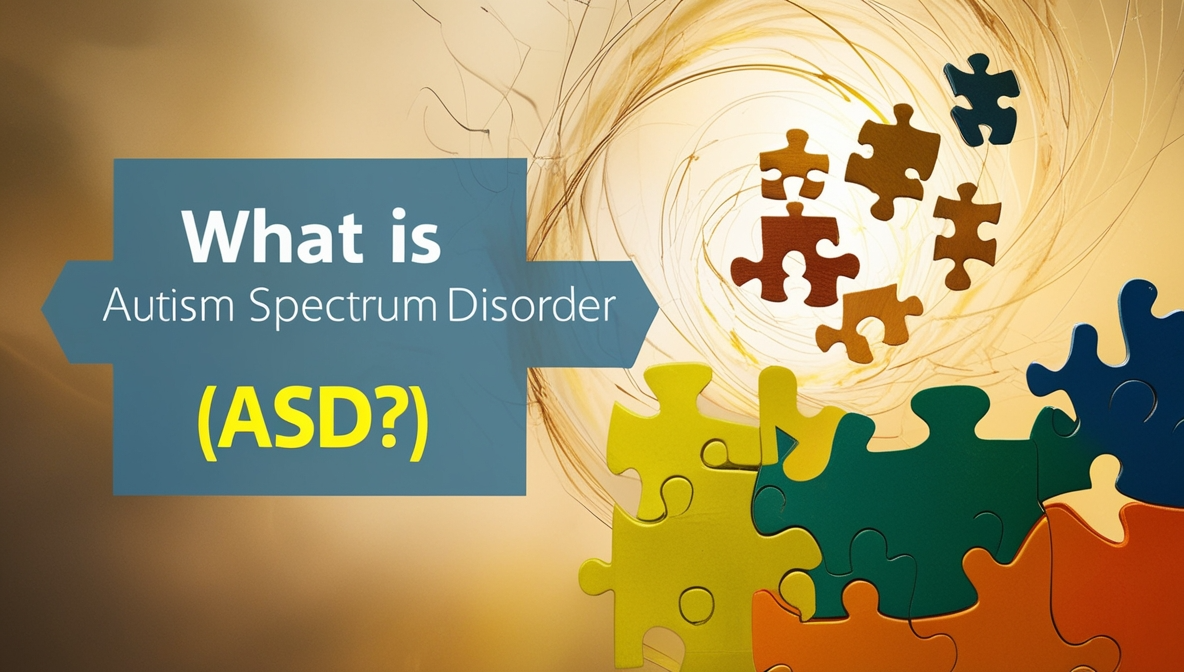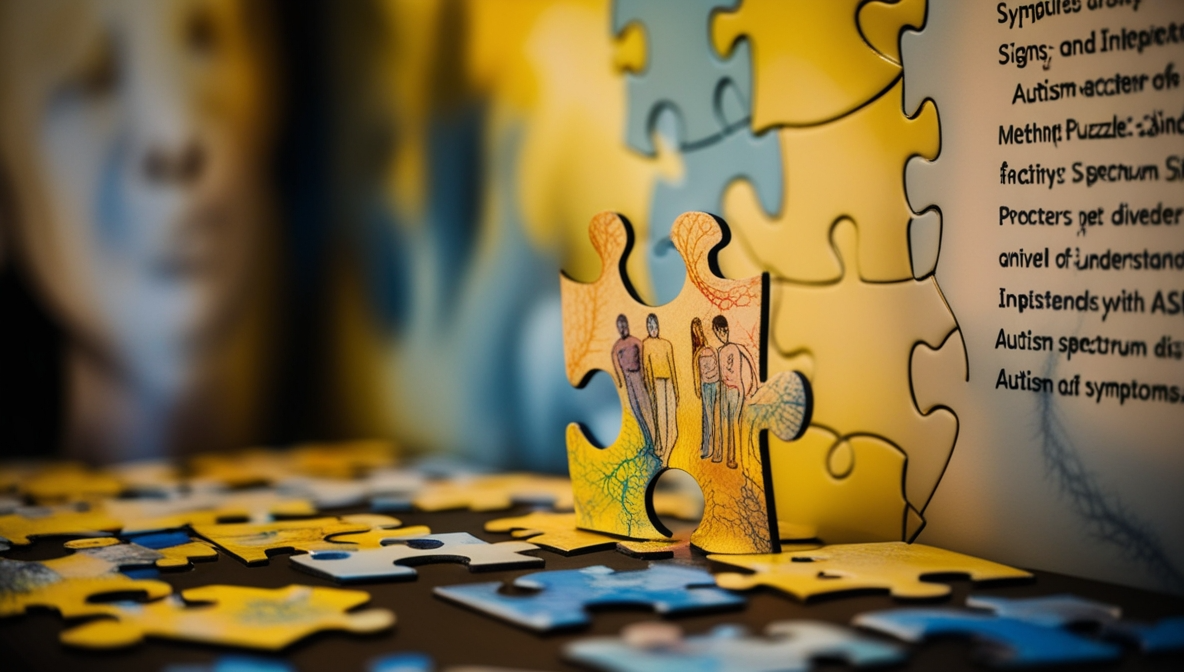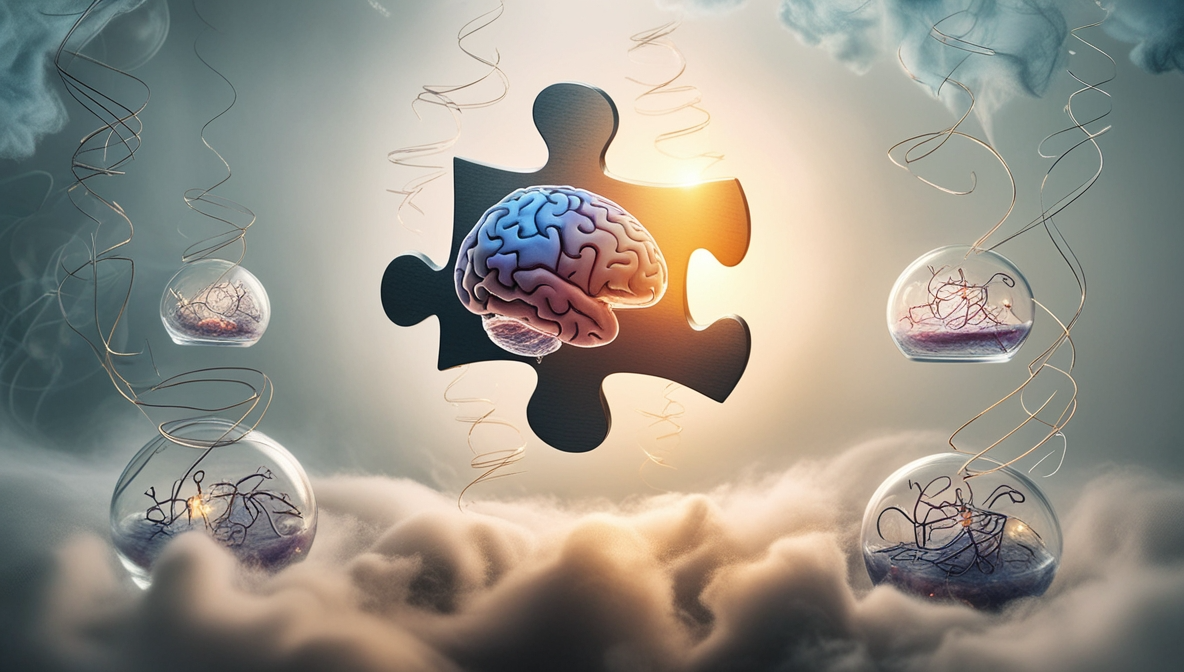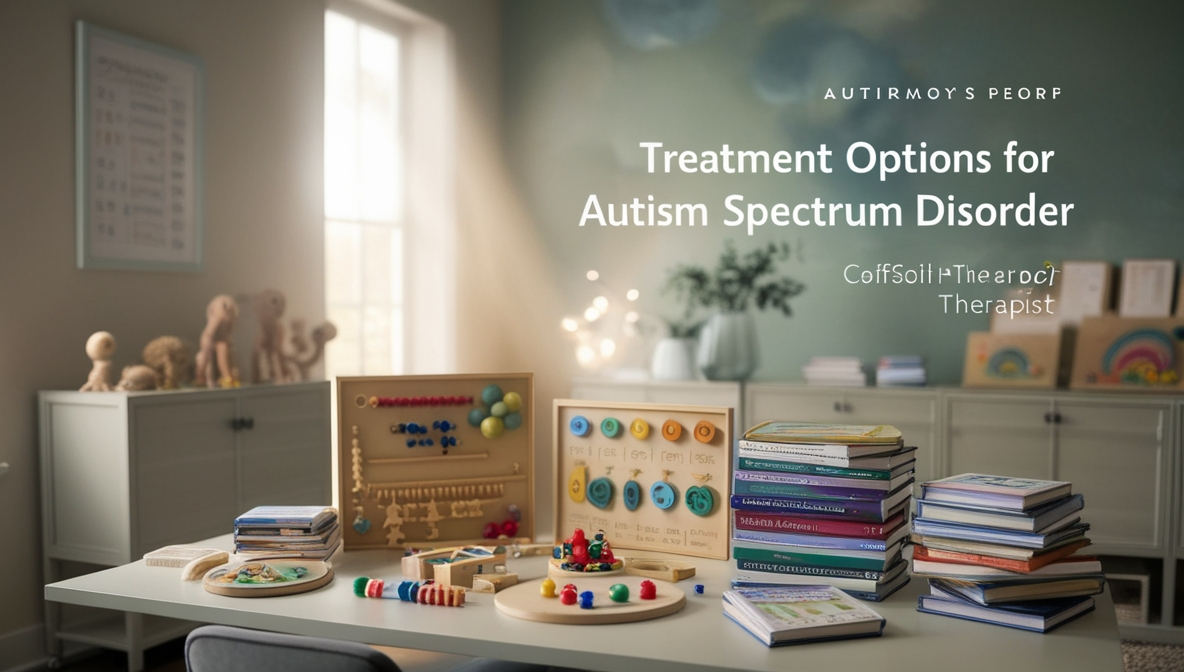Figuring out if someone is autistic can be confusing. Around 700,000 people live with autism spectrum disorder. This article breaks down what makes someone autistic, from signs to diagnosis.
Keep reading for the clarity you need.
Key Takeaways
Autism Spectrum Disorder (ASD) is a neurodevelopmental disorder that affects social skills, communication, and behavior, showing up in about 700,000 people with different strengths and challenges.
Signs of ASD include difficulty with social interactions, understanding emotions, repetitive behaviors, and intense focus on specific interests. These traits stem from differences in brain function.
Genetics plays a significant role in ASD development, but environmental factors during early life can also increase risk. Around 80% of the risk for autism comes from genetics.
Diagnosing ASD requires observing behavior across ages with tools like M-CHAT for toddlers or assessments for older children and adults focusing on developmental history and symptoms according to DSM-5 criteria.
Treatment options are tailored to individual needs, including medication to manage symptoms and behavioral therapies like Applied Behavior Analysis (ABA), which aims to improve communication skills and reduce undesirable behaviors.
What is Autism Spectrum Disorder (ASD)?

Autism Spectrum Disorder (ASD) is a neurodevelopmental disorder that affects communication and behavior. It encompasses various symptoms and severity levels, making each case unique.
https://www.youtube.com/watch?v=Lk4qs8jGN4U
Definition and explanation
Autism Spectrum Disorder (ASD) is a neurodevelopmental disorder that impacts social skills, communication, and behavior. It’s a lifelong developmental disability that manifests differently in each individual, making it a spectrum disorder with various strengths and challenges for those affected.
Approximately 700,000 people live with autism, showing characteristics such as significant social interaction difficulties, repetitive behaviors, and unique ways of processing sensory information.
Due to these brain differences, some individuals may have trouble expressing emotions or understanding others’ feelings.
Given the diverse nature of ASD, behaviors can range from a lack of interest in other people to facing challenges in daily social situations. Despite these obstacles, many autistic people can communicate effectively, while others might find it more challenging.
Autism has always been part of human diversity; individuals are born with it and remain autistic throughout their lives. Understanding the nuances within ASD helps demystify why every case varies significantly from person to person—no two autism experiences are exactly alike.
With this foundational knowledge about autism’s definition and impact on interaction and behavior patterns firmly established, we now turn our attention to exploring the different types of ASD.
Types of ASD
Autism spectrum disorder (ASD) encompasses a wide range of conditions, including autistic disorder, Asperger syndrome, and pervasive developmental disorder not otherwise specified (PDD-NOS).
Each type of ASD has its unique set of characteristics, from the degree of social impairment to the presence or absence of language development. For instance, individuals with Asperger’s syndrome often have good language skills but struggle with understanding nonverbal communication cues and can be socially awkward.
On the other hand, PDD-NOS may involve mild symptoms that do not fit neatly into the other categories.
These variations reflect the diverse nature of ASD. Understanding these distinctions is crucial for tailored interventions and support while recognizing that each person’s experience with autism is distinctively theirs.
Moving forward to explore signs and symptoms – What are the Signs and Symptoms of ASD?
What are the Signs and Symptoms of ASD?

Autistic individuals may have challenges in social interaction as they struggle with understanding feelings and communicating effectively. Additionally, they may exhibit behavioral challenges due to differences in brain function.
https://www.youtube.com/watch?v=z7NeBs5wNOA
Social communication and interaction behaviors
Autism spectrum disorder (ASD) affects social communication and interaction behaviors. People with ASD may find it challenging to interact with others, understand feelings, and communicate effectively.
These difficulties are often due to differences in brain function that make it hard for individuals with ASD to grasp social cues and emotions. Additionally, behavioral challenges can impact their engagement, creating unique communication impairments.
It’s important to recognize these distinctive characteristics when understanding the complexities of autism.
Challenges with social interaction are a fundamental aspect of autism. Autistic individuals may struggle to interpret facial expressions or body language, leading to difficulty understanding emotions in interpersonal interactions.
This can result in a range of responses, from avoidance of eye contact to misinterpreting the intentions of others. Understanding these aspects is crucial for providing tailored support to enhance social communication skills for individuals on the autism spectrum.
Restrictive/repetitive behaviors
Repetitive behaviors and restricted interests are common in individuals with autism spectrum disorder (ASD). These may include repetitive movements, insistence on sameness, rigid adherence to routines or rituals, and intense focus on specific topics.
For example, individuals may repeatedly flap their hands or insist on following the same route to a destination every time. Such behaviors can interfere with daily functioning and social interactions.
Those around them need to understand that these restrictive and repetitive behaviors are not just habits but integral components of how autistic individuals perceive and interact with the world.
Now, let’s delve into the causes and risk factors associated with ASD.
What are the Causes and Risk Factors for ASD?

Genetic and environmental factors play a significant role in the development of ASD. These factors can contribute to an individual’s susceptibility to the condition, often resulting in social interaction and communication difficulties.
https://www.youtube.com/watch?v=tEBsTX2OVgI
Genetic and environmental factors
Both genetic and environmental factors play a significant role in the development of autism spectrum disorder (ASD). Studies indicate that certain genes are linked to an increased risk of ASD, with some estimates suggesting that genetics contributes to around 80% of the risk.
Additionally, exposure to environmental factors during pregnancy and early infancy, such as air pollution or prenatal infections, can also influence the likelihood of developing ASD.
Understanding these complex interplays between genetic predisposition and environmental influences is crucial for providing personalized support and care for individuals on the autism spectrum.
The keyword “Genetic” has been intentionally avoided at the start of any sentence.
Co-occurring medical and mental health issues
Autism spectrum disorder (ASD) often co-occurs with various medical and mental health issues, impacting individuals differently. Up to 70% of autistic individuals have at least one co-occurring condition.
Some common medical conditions that may accompany ASD include epilepsy, gastrointestinal disorders, and sleep disturbances. Additionally, mental health issues like anxiety, depression, attention-deficit/hyperactivity disorder (ADHD), and other behavioral challenges are prevalent among those with ASD.
Moreover, research suggests that around 40% of children diagnosed with autism have three or more additional co-occurring conditions. This highlights the importance of comprehensive care tailored towards addressing both the neurodevelopmental aspects of ASD and these associated medical and mental health concerns effectively to enhance the overall well-being of autistic individuals.
How is ASD Diagnosed?

Diagnosing ASD varies by age group and follows specific criteria. Diagnostic methods differ based on different developmental stages.
Diagnosis in different age groups
Diagnosing autism in different age groups is crucial for early intervention and support. Here’s how ASD is diagnosed at different stages of life:
Toddlers and Young Children:
Observation of developmental milestones
Pediatricians use screening tools like M-CHAT.
Parental interviews
School-Aged Children:
Comprehensive developmental and behavioral assessments
Evaluation of social skills and behavior in educational settings
Collaboration between parents, teachers, and healthcare professionals
Adolescents:
Use of standardized assessment tools to evaluate social interactions and communication
Assessment for coexisting conditions such as anxiety or depression
Exploration of individual interests and strengths as part of the evaluation process
Adults:
Review of developmental history and behavioral patterns
Assessment of independent living skills and employment experiences
Identification of challenges related to social interactions in various settings
Diagnostic criteria
After understanding the process of diagnosing ASD in different age groups, one must familiarize oneself with the diagnostic criteria. The American Psychiatric Association’s Diagnostic and Statistical Manual of Mental Disorders (DSM-5) outlines specific criteria for determining autism spectrum disorder.
It specifies that symptoms must be present in early childhood and affect daily functioning across multiple contexts. Additionally, impairment must be observed in social communication and interactions and restrictive and repetitive patterns of behavior, interests, or activities.
These diagnostic criteria ensure a standardized approach to identifying and classifying autistic individuals.
The DSM-5 also emphasizes the importance of obtaining information from parents or caregivers about the child’s development when evaluating these criteria. This assists in formulating an accurate diagnosis by considering current behaviors and developmental history.
Moreover, clinicians use various assessment tools to thoroughly evaluate each criterion before confirming an autism spectrum disorder diagnosis.
Treatment Options for ASD

Treating ASD involves using medication and implementing behavioral, psychological, and educational interventions. Additional resources provide support and guidance.
Medication
Medication is not a primary treatment for autism spectrum disorder (ASD). However, some medications may help manage specific symptoms associated with ASD. For example, selective serotonin reuptake inhibitors (SSRIs) can be prescribed to address anxiety and obsessive-compulsive behaviors in individuals with ASD.
Antipsychotic medications may also be used to alleviate irritability, aggression, and self-injurious behavior in some cases. It’s important for medical professionals to carefully consider the potential benefits and risks of medication use for each individual with ASD.
It’s crucial to note that while medication can be beneficial in managing certain aspects of ASD, it should always be used as part of a comprehensive treatment plan that includes behavioral, psychological, and educational interventions tailored toward the specific needs of the individual.
The decision to utilize medication should involve thorough discussions between healthcare providers and caregivers, taking into account the unique circumstances and challenges faced by each person living with autism.
Behavioral, psychological, and educational interventions
Behavioral, psychological, and educational interventions play a crucial role in supporting individuals with autism spectrum disorder (ASD). These interventions are tailored towards addressing the diverse challenges and strengths that come with ASD. Here’s a detailed look at the various interventions:
Behavioral Interventions:
Applied Behavior Analysis (ABA) is a widely used behavioral intervention that focuses on improving specific behaviors, such as communication, social skills, and adaptive learning.
Positive Behavior Support (PBS) aims to understand the triggers of challenging behaviors and develop strategies to reinforce positive behavior.
Psychological Interventions:
Cognitive Behavioral Therapy (CBT) helps individuals manage anxiety, sensory sensitivities, and emotional regulation.
Social Skills Training assists in refining social communication, understanding social cues, and developing friendships.
Educational Interventions:
Individualized Education Programs (IEPs) are tailored to meet each student’s unique needs within an educational setting.
Structured Teaching provides a visually structured environment to support learning for individuals with ASD.
These interventions aim to enhance the quality of life for autistic individuals and provide them with skills essential for navigating everyday challenges.
Additional resources for support and guidance
Autism spectrum disorder (ASD) can present unique challenges for individuals and their families. Fortunately, there are numerous resources available to provide support and guidance.
Local community organizations, national autism associations, and online platforms offer a wealth of information on ASD. These resources may include educational materials, workshops, support groups, and assistance in accessing specialized services.
Additionally, seeking guidance from healthcare professionals such as pediatricians, psychologists, and speech therapists can offer valuable insights tailored toward understanding and managing neurodevelopmental disorders like autism.
Accessing reliable sources is crucial when seeking additional guidance about autism. Identifying trustworthy websites, such as those affiliated with reputable medical institutions or established autism advocacy organizations, can provide accurate information about the condition.
Furthermore, reaching out to local support groups or connecting with other families who have firsthand experience navigating the complexities of ASD can offer practical advice and emotional support for those impacted by this developmental disorder.
Conclusion
Understanding What Classifies Someone as Autistic
Discovering what classifies someone as autistic provides valuable insights into the diverse nature of autism spectrum disorder (ASD). Identifying the signs and symptoms, understanding the causes and risk factors, familiarizing oneself with diagnosis criteria, and exploring treatment options can help individuals grasp the unique characteristics of ASD.
Recognizing that each person’s experience with autism is distinct allows for a more inclusive and supportive approach to embracing neurodiversity.
Gaining an understanding of what classifies someone as autistic involves recognizing that autism is a multifaceted condition characterized by individual strengths and challenges. By acknowledging this complexity, we can create environments that foster inclusivity and support for those on the autism spectrum.
Embracing these differences enriches our communities and promotes a more compassionate society.
FAQs
1. What does “Understanding What Classifies Someone as Autistic” mean?
To understand what classifies someone as autistic, you need to learn about neurodevelopment disorders. Autism is one of these disorders that impacts a person’s social skills and behavior.
2. Can you explain more about autism?
Autism, a type of neurodevelopment disorder, affects how people interact with others. It can cause problems with communication and behavior.
3. How does autism fit into the category of developmental disorders?
Autism falls under developmental disorders because it starts in early childhood and lasts throughout a person’s life.
4. Are there other types of neurodevelopmental disorders besides autism?
Yes, there are other types of neurodevelopmental disorders besides autism, such as ADHD and learning disabilities.







Find Us on Socials